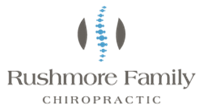Headaches are a common and often debilitating health issue, affecting millions of people worldwide. For many, these painful episodes can significantly impact daily life, causing lost productivity at work and preventing us from enjoying our favorite activities. While over-the-counter medications can provide temporary relief, they often only treat the symptoms rather than addressing the underlying causes of headaches. As experts in chiropractic care, we understand that looking beyond the symptoms to identify and treat the root issues is critical to achieving lasting relief and prevention of future headaches.
Chiropractic care offers a natural, non-invasive alternative to traditional headache treatments. It focuses on correcting imbalances and dysfunction within the musculoskeletal and nervous systems. Many headaches, particularly tension and cervicogenic headaches, can be traced to issues in the cervical spine (neck) and surrounding musculature. These problems can arise from various factors, such as poor posture, muscle tension, or misaligned vertebrae, leading to irritation and inflammation in the nerves responsible for transmitting pain signals to the brain.
In this guide, we will explore the benefits of chiropractic care in addressing headaches and how our personalized treatment approach can help you break the cycle of pain and reclaim control of your life.
Types of Headaches Responsive to Chiropractic Care
Chiropractic care can effectively address various types of headaches, with tension and cervicogenic headaches being the most responsive. Let’s take a closer look at these headache types and their associations with spinal health:
– Tension Headaches: The most common form of headache, tension headaches manifest as dull, persistent pain on both sides of the head, often described as a tight band or pressure. They may stem from muscle tension or trigger points in the neck, shoulders, and upper back, often resulting from physical and emotional stress, poor posture, or misaligned vertebrae.
– Cervicogenic Headaches: Originating in the cervical spine (neck), these headaches are characterized by pain on one side of the head, often extending to the forehead, temple, or around the eyes. Cervicogenic headaches typically result from dysfunction or inflammation of the joints, muscles, or nerves in the neck.
In addition to tension and cervicogenic headaches, chiropractic care may also provide some relief for migraine sufferers by addressing any musculoskeletal issues contributing to their symptoms.
Chiropractic Techniques for Headache Relief
Our approach to alleviating headache pain and preventing future episodes involves a comprehensive assessment of the patient’s spinal health, posture, and lifestyle factors. Based on this assessment, we tailor a personalized treatment plan that may involve the following techniques and therapies:
– Chiropractic Adjustments: By gently manipulating the cervical spine, we can correct vertebral misalignments and restore proper joint function. This not only reduces irritation and pressure on the nerves but also promotes relaxation and tension release in the surrounding soft tissues.
– Soft Tissue Therapy: Techniques such as trigger point therapy, myofascial release, and massage help to reduce muscle tension, break up adhesions, and increase blood flow to promote healing and relaxation.
– Corrective Exercises: Strengthening and stretching exercises tailored to target specific muscle groups can help support proper spinal alignment and reduce the likelihood of recurring headaches. These exercises can be performed consistently at home for optimum results.
Lifestyle and Ergonomic Factors in Headache Prevention
While chiropractic care can play a pivotal role in headache relief and prevention, it’s essential to address lifestyle and ergonomic factors that contribute to ongoing pain. Here are some key aspects to consider:
– Posture: Poor posture, especially during long periods of sitting or using electronic devices, can lead to muscle imbalances and tension in the neck, shoulders, and upper back. Adopting proper posture habits can significantly reduce the risk of developing headaches.
– Ergonomics: Ensuring that your workstation setup – including chair height, keyboard and mouse placement, and monitor position – is ergonomically designed can help prevent strain and tension in the neck and shoulders that contribute to headaches.
– Stress Management: Emotional and physical stress often manifests as muscle tension, leading to headache pain. Incorporating stress management techniques such as deep breathing, meditation, or regular physical activity can help keep tension headaches at bay.
– Hydration and Nutrition: Dehydration is a common headache trigger. Ensuring you drink enough water throughout the day, combined with a balanced diet, can help maintain proper hydration levels and reduce headache occurrence.
The Long-Term Benefits of Chiropractic Care for Headaches
Regular chiropractic care and the adoption of healthy lifestyle habits can lead to long-lasting headache relief and improved overall health. By fostering optimal spinal function and addressing underlying musculoskeletal imbalances, chiropractic treatment enables the body to function at its best, reducing the risk of recurring headaches.
As you progress through your treatment plan, you may experience not only fewer headaches but also better focus, increased energy levels, and improved quality of sleep—all factors that contribute to an enhanced sense of wellness and better overall health.
Conclusion
Chiropractic care offers an effective, natural, and non-invasive solution for those seeking relief from headaches and looking for long-term prevention strategies. Our comprehensive approach to headache care addresses the root causes of pain, empowering patients to take control of their symptoms and enjoy a life free from debilitating headaches.
If you’re ready to end the pain and reclaim your life, contact Rushmore Family Chiropractic today to schedule a consultation. We offer chiropractic care for headaches so you can experience the lasting benefits of a healthy, well-aligned spine.

